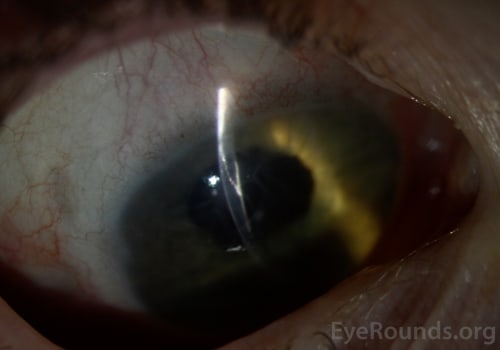Since laser-assisted cataract surgery is gaining momentum in the medical world, some patients wonder if it's better than the traditional surgical approach. While both methods are highly effective, there are some key differences that you should be aware of.
Cost
Laser cataract surgery is more accurate and less invasive than traditional cataract surgery. However, this technology also comes at a price. In addition, laser cataract surgery is not covered by most health insurance plans.
Traditional cataract surgery is one of the most effective treatments for vision impairment. This type of surgery ranges from $3,500 to $5,000 per eye. Private health insurance may cover some of the cost of this surgery. However, Medicare does not.
The cost of traditional cataract surgery is also dependent on the type of lens implant that is used. For example, a multifocal lens costs roughly 24 percent more than a monofocal lens.
Along with surgery costs, post-operative rehabilitation and vision clearance may also be factored into the overall cost. Recovery from laser cataract surgery can take a few weeks, and many patients can drive after a week or two. However, some patients have not seen their vision improve for several months.
Costs for laser-assisted cataract surgery vary depending on several factors, including the type of lens used during surgery, the level of surgeon experience, and the location of the surgery.
For standard cataract surgery, the average cost is $3,542 per eye. This cost is 80% covered by Medicare. The remaining $700 plus the deductible results in a total cost of $883.
During cataract surgery, a femtosecond laser breaks the lens into smaller pieces. It also creates a small incision in the cornea. A computer-controlled software system then uses the data to map the incision and create an opening for the lens implant.
Accuracy
Using the LenSx(r) Laser, surgeons can perform all corneal incisions, including anterior capsulotomies, without using surgical blades or sutures. The laser can achieve precise, predictable cuts in three dimensions, resulting in highly reproducible incisions.
Laser-assisted cataract surgery is an innovative surgical technique that eliminates surgical blades and ultrasound probes. Instead, the laser breaks up a cataract, softening the lens and smoothing any astigmatism. The resulting opening is precise and symmetrical, reducing the risk of leakage and complications.
Femtosecond laser-assisted cataract surgery (FLACS) is safe and effective. However, results from extensive studies have yet to be conclusive. In addition, many surgeons report that it takes time to master the new technology, and some patients experience problems with their delicate eyes during the learning process.
One study found that femtosecond laser cataract surgery was safe and slightly better than conventional surgery. The study used I-trace to assess ocular aberrations before and after surgery. The I-trace ray tracing aberrometer measured lower and higher-order aberrations. It was also used to evaluate coma and spherical aberrations.
Another study found that FLACS yielded a high degree of reproducibility. The study included 196 conventional cataract surgery cases, compared to 456 FLACS cases. The study found that a higher percentage of eyes in the FLACS group achieved their intended refraction. However, the study should have included details on the near visual acuity.
The study also investigated the accuracy of the TK and K values in predicting residual refraction after surgery. The study found that the TK value was higher than the K value in most cases. However, other researchers suggested that the specific calculation needed to be corrected.
Safety
Using a laser to perform cataract surgery has the potential to improve safety. The computer-guided laser can reduce the risks associated with using manual instruments. The laser also improves the precision of the cataract removal process.
Laser-assisted cataract surgery is still relatively new. The technology took years to develop. However, the laser makes a smoother incision and reduces the amount of ultrasonic energy required to remove the cataract.
In laser-assisted cataract surgery, a femtosecond laser creates a circular opening in the lens capsule. This opening reduces the risk of leakage and can improve vision after surgery.
While the computer-guided laser is a marvel of modern technology, it is still an expensive investment. Surgeons pay a substantial yearly maintenance fee to keep the machine running. Nevertheless, the manufacturer of the FLACS laser has touted its precision.
Laser-assisted cataract surgery can also be used to create a multifocal lens. These lenses provide near and far vision. After the cataract is removed, an artificial lens is implanted.
The laser can also create a more symmetrical circular opening, allowing for a more predictable implant position. The computer-controlled laser also improves the accuracy of the cataract removal process.
While laser cataract surgery may not produce a visible visual benefit, computer-guided laser and technology can make smoother incisions and reduce the amount of ultrasound energy required to remove the cataract. This can also minimize post-op corneal swelling.
Although laser cataract surgery isn't for everyone, it does provide more personalized treatment and reduces the risk of glasses and contacts after surgery. In addition, the accuracy of the cuts made during surgery can also increase.
The most important thing to remember is that any procedure has its drawbacks. Therefore, finding a surgeon you trust and can rely on is essential.
Reproducibility
Several studies have investigated the reproducibility of laser-assisted cataract surgery. One study includes a case series comparing the outcomes of this surgery to routine ultrasound phacoemulsification cataract surgery. Although some studies report no significant difference in CDVA, intraocular lens power predictability, or patient-reported visual function, a few reports indicate a higher incidence of anterior capsule tears.
The reproducibility of laser-Assisted cataract surgery is essential for practitioners who want to perform the procedure accurately. The system has less risk of complication than manual phacoemulsification and may result in less intraocular lens tilt, higher order aberrations, and intraocular lens centration. However, there are still questions about the smoothness of the anterior capsulotomy made with a laser.
Femtosecond lasers can make precise corneal incisions and produce self-sealing incisions in the cornea. These incisions are reported to be more stable and reproducible but are limited by early versions of femtosecond laser systems.
Femtosecond laser-assisted cataract surgery can provide a paradigm shift in cataract surgery. It can help achieve safe, accurate, and reproducible surgery, improving patient-reported outcomes and increasing patient satisfaction. However, there are some logistical and financial factors to consider compared to conventional cataract surgery.
The reproducibility of laser-Assisted surgery is comparable to standard cataract surgery. However, a few cases have been reported, and most studies were conducted in Europe.
In addition to reproducibility, laser-Assisted cataract surgery is safer. Complication rates are generally lower, and most cases report no significant intraoperative complications. However, a case series of 1105 patients comparing laser-Assisted cataract surgery to standard phacoemulsification cataract surgery reported a 0.27% rate of posterior capsule tears.
Predictability
Compared with traditional cataract surgery, laser-assisted cataract surgery (FLACS) has a slightly superior outcome. Using a computer-guided laser to soften the cataract with ultrasound energy minimizes complications such as swelling and inflammation. In addition, the procedure is safe and reproducible. However, its visual benefit is minimal.
The goal of femtosecond laser-assisted cataract surgery is to improve the accuracy of the anterior capsulotomy. In addition, FLACS improves the overall wound architecture. This leads to less posterior capsular rupture and less surgically induced astigmatism. The procedure also reduces the cumulative dissipated energy. However, it is still being determined whether or not femtosecond laser-assisted surgery improves visual outcomes.
This study evaluated the agreement of K and TK values in predicting residual refraction after femtosecond laser-assisted catagorism surgery and included 216 eyes of 108 patients. The study used an I-Trace ray tracing aberrometer to measure lower and higher-order aberrations.
The results showed that FLACS yielded a high level of accuracy and reproducibility. The study also found that the femtosecond laser improved predictability. However, it did not provide a superior visual outcome to conventional phaco surgery.
The study found that FLACS performed with a surgeon experienced in cataract surgery. The femtosecond laser performed a consistent capsulotomy and reduced cumulative dissipated energy. This laser also served a standardized capsulorhexis, making the capsulotomy more predictable. In addition, the procedure was performed on one eye at a time, allowing the surgeon to predict complications before the surgery.
The study also showed that FLACS performed with a superior safety index. The safety index was 1.744 in the CPCS group, while the FLACS group had a safety index of 1.777. Therefore, the Yonsei University College of Medicine IRB approved the study for its retrospective observational case series.



